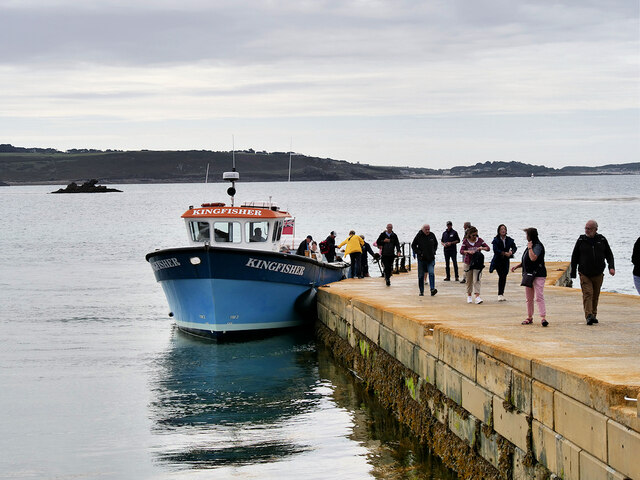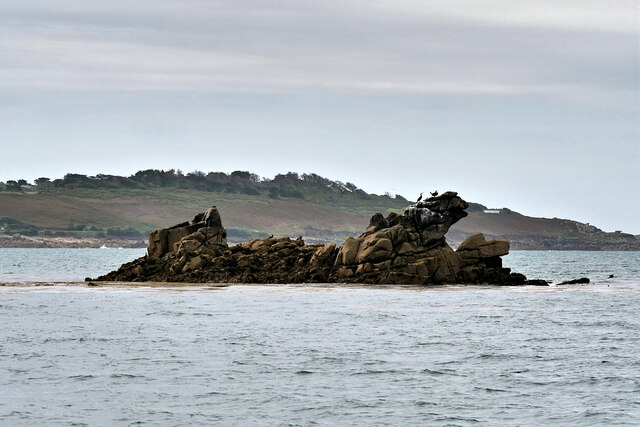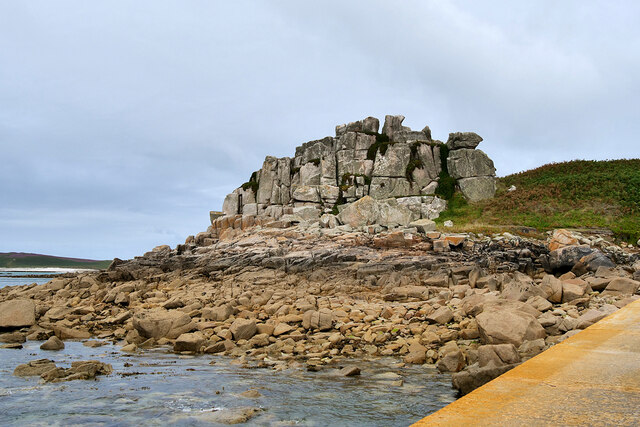Tobaccoman's Ledge
Island in Cornwall
England
Tobaccoman's Ledge

Tobaccoman's Ledge is a unique and picturesque island located off the coast of Cornwall, England. This small rocky outcrop is situated approximately 2 kilometers southwest of Land's End, making it one of the westernmost points of the county. The island's name is derived from its resemblance to a tobacco pipe when viewed from certain angles.
Covered in lush vegetation and surrounded by crystal-clear turquoise waters, Tobaccoman's Ledge offers breathtaking natural beauty. The island measures around 200 meters in length and 100 meters in width, with its tallest point reaching approximately 20 meters above sea level. This height provides visitors with stunning panoramic views of the surrounding coastline and the Atlantic Ocean.
Access to Tobaccoman's Ledge is only possible during low tide when a natural sandbar connects the island to the mainland. This temporary pathway disappears as the tide rises, making it essential for visitors to carefully plan their visit to ensure a safe return. Due to its remote location and limited accessibility, Tobaccoman's Ledge remains relatively untouched, preserving its pristine natural environment.
The island is home to a diverse range of wildlife, including various seabirds, marine mammals, and a variety of plant species. It serves as an important breeding ground for several bird species, making it a popular spot for birdwatchers and nature enthusiasts.
Tobaccoman's Ledge is a hidden gem for those seeking solitude and tranquility amidst stunning coastal scenery. Its rugged beauty and unique geological features make it a must-visit destination for adventurers and nature lovers alike.
If you have any feedback on the listing, please let us know in the comments section below.
Tobaccoman's Ledge Images
Images are sourced within 2km of 49.942706/-6.3169158 or Grid Reference SV9013. Thanks to Geograph Open Source API. All images are credited.













Tobaccoman's Ledge is located at Grid Ref: SV9013 (Lat: 49.942706, Lng: -6.3169158)
Division: Isles of Scilly
Unitary Authority: Isles of Scilly
Police Authority: Devon and Cornwall
What 3 Words
///fillings.hindered.lifted. Near Tresco, Isles of Scilly
Nearby Locations
Related Wikis
Oliver's Battery, Tresco
Oliver's Battery is a ruined artillery battery on the island of Tresco in the Isles of Scilly off of Cornwall, England. It was built by the Parliamentarian...
Tresco Heliport
Tresco Heliport (ICAO: EGHT) is a heliport located on the island of Tresco, in the Isles of Scilly off the southwest coast of England, UK. The heliport...
Tresco Priory
Tresco Priory is a former monastic settlement on Tresco, Isles of Scilly founded in 946 AD. It was re-founded as the Priory of St Nicholas by monks from...
Tresco Abbey Gardens
Tresco Abbey Gardens are located on the island of Tresco in the Isles of Scilly, United Kingdom. The 17 acre gardens were established by the nineteenth...
Nearby Amenities
Located within 500m of 49.942706,-6.3169158Have you been to Tobaccoman's Ledge?
Leave your review of Tobaccoman's Ledge below (or comments, questions and feedback).






